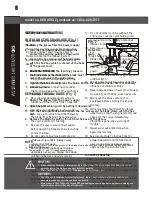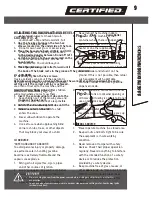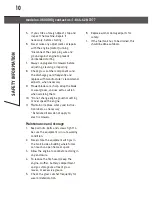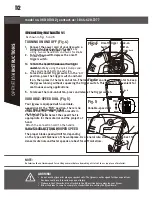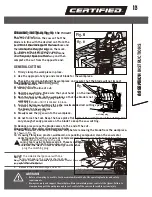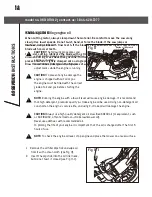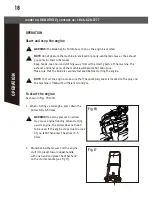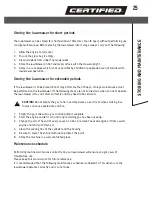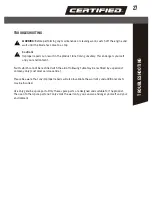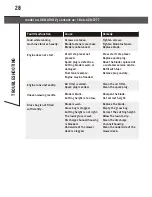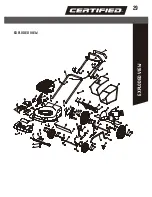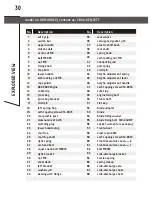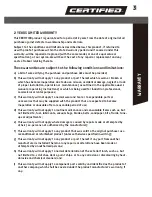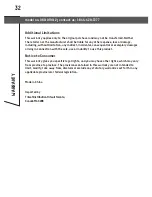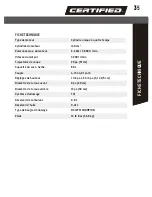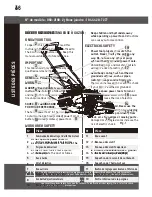
To clean a flooded engine
NOTE:
if the engine won’t start after you have pressed the starter several times, the
engine may be flooded with excess fuel. Use following procedure to clear and start a
flooded engine.
1. Release the engine start/stop lever to stop engine.
2. Remove the spark plug, dry it, and then
reinstall it.
(1) Remove the spark plug cover (see Fig. 20).
(2) Use the spark plug socket wrench to
remove the spark plug (see Fig. 20-1).
(3) After drying, replace the spark plug.
NOTE:
Install the spark plug carefully by hand, to avoid cross-threading. After the plug is
seated, tighten 1/8 to 1/4 turn with the spark plug socket wrench to compress the washer.
3. Pull the engine start/stop lever toward upper handle.
4. Operate the starter as described above.
Mowing
WARNING:
Always observe the strictest safety procedures when using the lawnmower.
Carefully read the safety instructions of this manual before using the lawnmower.
WARNING:
Never open the ejector flap when the grass bag has been detached (to be
emptied) and the engine is still running. The rotating blade can cause serious injuries!
1. Select your required cutting height.
2. Start the engine and allow it run, and set it to required speed.
See “to start the engine”.
3. Keep a firm grip on the upper handle with engine stop/start lever and drive lever (clutch
lever) closed and walk along with it self-propelling to start mowing.
Working tips
1. Walk, never run with the mower, and be very careful when mowing uneven or rough ground.
2. Mow across slopes, never up and down.
3. Be careful when changing the direction of the mower on a slope.
4. Do not mow excessively steep slopes.
5. The best result will be achieved if the grass is dry. Wet grass will tend to clog the blade and
the grass collection system.
6. Grass grows at different rates at different time of the year. Never use the lowest cutting
height for the first cut of the season or in drought conditions.
7. Only about one third of the grass height should be cut.
8. Do not cut high or wet grass when mulching to ensure that the cut grass can be scattered
effectively. When you have been cutting for several minutes, please stop the mower and
clean the blade and the deck.
9. Do not remove grass debris in the mower casing or on the blade by hand or with your feet.
Instead, use suitable tools such as a brush or broom.
Emptying the grass bag
As soon as grass clippings start to trail the lawnmower, it is time to empty the grass bag.
NOTE:
Before taking off the grass bag, switch off the engine and wait until the blade has
come to a stop.
1. To take off the grass bag, use one hand to lift up ejector flap and the other to grab onto the
carry handle.The ejector flap automatically falls down after removing the grass bag and
closes off the rear chute opening.
2. Empty the grass debris in the grass bag, and refit grass bag.
NOTE:
If any grass residue is caught in the discharge chute, clean it using a brush. Do not
remove grass debris in the mower casing or on the blade by hand or with your feet.
Instead, use suitable tools such as a brush or broom. To ensure that the cut grass can be
collected into grass bag, the discharge opening and inside the mower casing must be
cleared of any blockage.
21
OPERATION
Summary of Contents for 060-0190-2
Page 30: ...EXPLODED VIEW 29 EXPLODED VIEW ...
Page 34: ......
Page 64: ...VUE ÉCLATÉE 63 VUE ÉCLATÉE ...


